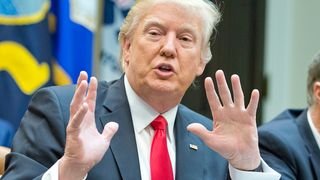A possible trade war between the United States and China is often considered the single biggest threat of the Trump Administration to Australia. Yet it is not as likely as many believe. Despite fiery rhetoric during the campaign, Trump’s official trade platform is surprisingly modest on this issue. It only promises to: (a) instruct the Treasury Secretary to label China a currency manipulator; and (b) instruct the United States Trade Representative (USTR) to bring trade cases against alleged Chinese trade subsidies.
The latter is a relatively uncontroversial policy, as the USTR already brings many trade cases against China via the WTO’s dispute settlement mechanism. During the Obama Administration, the USTR launched 21 WTO enforcement complaints — 12 of which were directed at China — and prevailed in every case decided thus far. It is therefore the former commitment — to designate China a currency manipulator — that potentially threatens trade war.
Australia’s post-Trump trade agenda: Making sense of limited options

To be sure, applying this designation does not commit the United States to retaliatory action. As per the Omnibus Trade and Competitiveness Act of 1988, doing so only requires the Treasury to “initiate negotiations” with China over its exchange rate policy. But as monetary policy interventions by the People’s Bank of China in recent years have applied upward pressure on the RMB, it is unclear what further actions the United States could realistically demand China undertake. Only once such bilateral negotiations fail could trade remedies be applied. The application of remedies is a distinct second step that follows the currency manipulator designation, and remains at the administration’s future discretion.
Doing so would be hugely detrimental to the US economy. It would impose massive costs on US businesses, stoke domestic inflation, invite tit-for-tat retaliation by China, and would likely be found to be in breach of WTO rules. Nor would it do much for job creation, as the selective imposition of tariffs against China cannot create jobs in globalised industries where the United States lacks current industrial capacity, let alone comparative advantages.
These considerations mean that Trump’s trade threats against China are likely “more political than practical”. Rather than a genuine policy commitment, they simply reflect an instrumental electoral strategy designed to appeal to protectionist constituents at home. Designed with ‘room to move’, the administration can progressively back away once in office if it wishes to avoid the economic costs that would follow. Applying the ‘currency manipulator’ certainly sends political signals to China, but does not fully commit the two to a mutually destructive trade war yet.






